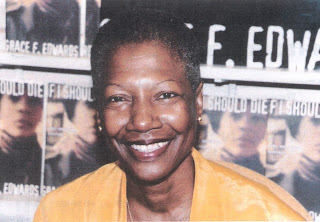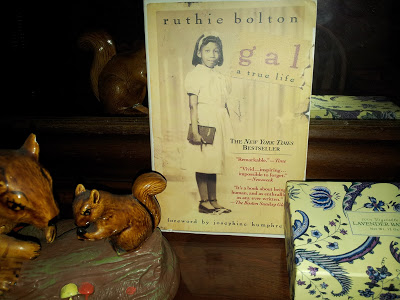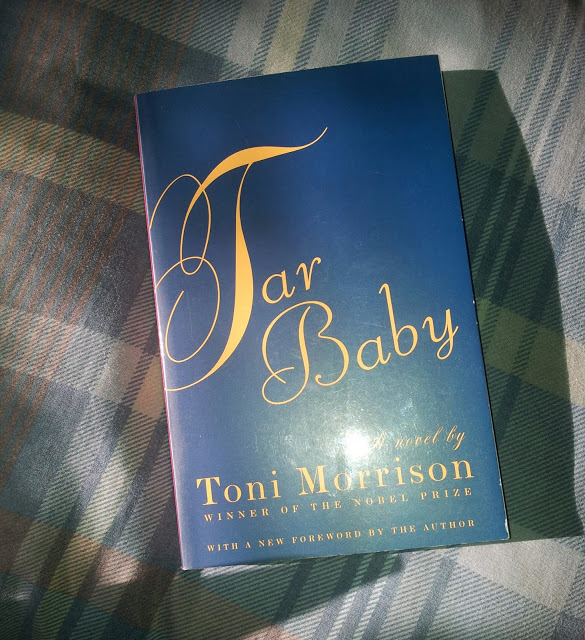I would like to present a blog that reveals two short-lived mystery series written by women of color and starring women of color protagonists. I came across Grace F. Edwards and Judith Smith-Levin (rest in peace) in a search that branched when I discovered Valerie Wilson Wesley's Tamara Hayle detective series. While Wesley's series lasted eight books, sadly, Edwards and Smith-Levin's respective series were only four books long. Still, each title gave me everything I looked for in a smart, dedicated woman displaying independent thinking and deductive reasoning when confronted with a puzzling murder mystery.
 Grace F. Edwards wrote the Mali Anderson series. Based in Harlem, Mali Anderson was a former department cop who found herself fired from the force after punching out a racist/sexist police officer. In turn, a lawsuit followed after her termination. Mali spent the majority of her four book series detailing minutiae events concerning the lawsuit’s development. Meanwhile, Mali set into her purists of receiving her social workers’ Ph.D while dating the one officer who stood by her during her days on the force and its crumbling aftermath. He was the handsome Tad Honeywell. Between solving the murders surrounding her hometown of Harlem, Mali also raised her eleven-year-old orphaned nephew, Alvin. Living with her father, they both went about ensuring that Alvin remained protected from the predators that stalked the streets of Harlem. Both the murdering and drug affiliated kind I must clarify, considering Mali did everything in her power to keep her nephew from becoming a victim to the streets period. In the last book Alvin was missing the entire time. Mali felt it was best to send him on a yacht out of the city, especially when in the previous book things got heavy between Alvin and a neighborhood street pimp. All of this only brightened my love of the series; social commentaries subtle but at play. Nevertheless, at any moment you could count on Mali either storming to her family and friends' rescue, or her--quite literally--being hit by a car. In retrospect, Mali did take a series of beatings book after book.
Grace F. Edwards wrote the Mali Anderson series. Based in Harlem, Mali Anderson was a former department cop who found herself fired from the force after punching out a racist/sexist police officer. In turn, a lawsuit followed after her termination. Mali spent the majority of her four book series detailing minutiae events concerning the lawsuit’s development. Meanwhile, Mali set into her purists of receiving her social workers’ Ph.D while dating the one officer who stood by her during her days on the force and its crumbling aftermath. He was the handsome Tad Honeywell. Between solving the murders surrounding her hometown of Harlem, Mali also raised her eleven-year-old orphaned nephew, Alvin. Living with her father, they both went about ensuring that Alvin remained protected from the predators that stalked the streets of Harlem. Both the murdering and drug affiliated kind I must clarify, considering Mali did everything in her power to keep her nephew from becoming a victim to the streets period. In the last book Alvin was missing the entire time. Mali felt it was best to send him on a yacht out of the city, especially when in the previous book things got heavy between Alvin and a neighborhood street pimp. All of this only brightened my love of the series; social commentaries subtle but at play. Nevertheless, at any moment you could count on Mali either storming to her family and friends' rescue, or her--quite literally--being hit by a car. In retrospect, Mali did take a series of beatings book after book.
I loved reading about Mali’s character and do miss her stories. Unlike Star, who I will detail next, Mali was notas easily distracted by outside interference, including her relationship with Tad. She was a character that handled much of her circumstances head-on, driven by the desire to protect or avenge the victimized with the use of her brain. She was not seen as a shining sexy figure that the gender-opposite characters drooled over; therefore, she was most related as a sister to other characters. She was not an average character either, especially with her aspirations for personal justice ringing clear in her narrative. There was little titillation in this series outside Mali and Tad’s relationship, and I rather it be that way because too much can scream of author-inferring-character. Alternatively, Mali spent a good bit of her time speaking on the histories of Harlem, its architecture, and its music scene (her father was a musician). Because her boyfriend was still a police officer, she would take his advice when necessary, and place it aside when she felt like other tactics would work better. Remember, she was once a copherself so she felt capable. This would frustrate Tad, and I liked Mali better for it. So whereas she was no longer a cop, Mali still did her own thing when the people around her were victims of murderand in need of justice. She knew the victims of the crimes she faced. They were of her community, which was all the more reason for her to make the choices she made that risked her life.
 Judith Smith-Levin wrote the Starletta Duvall mystery series. Based in Massachusetts, Starletta Duvall was the a homicide lieutenant who favored going out into the field as opposed to pushing papers at her desk. In her first mystery, she even went undercover by using her sexy wiles to entrap the culprit of a singular crime. Similar to Mali, she received her share of departmental flack, particularly as an African-American woman leading a team of homicide detectives. However, one advantage that she had over Mali was that her father was a well-known police officer who remained honored within the department before his passing. So nobody really messed with her unlike Mali's ugly situation. While the respect of her father was often thrown into the mix, the true nature of her winning over many of her teammates was her apparent sexiness and gorgeous looks. Some of her department buddies would even refer to her as "baby." Partnered with an Italian-American man named, Dominic Paresi, Star (her nickname) solved a series of four-book cases with his assistants as well as her city's top medical examiner, and local womanizer, Mitchell Grant. With his blond hair and stunning green eyes, Grant even found himself intrigued by Star, and vice-versa. Before long, the two were sharing a bed that may possibility be the first display of an interracial couple in this genre of fiction. Nonetheless, while Star lived alone with a cat, she had her best friend, Vee, and Vee's children to help balance her life. Many of Star’s cases came handed to her within a professional distance, meaning she was never really one with the victims. I take that back—there were maybe two I can recall that Star held history with. Nevertheless, that did not stop Star from pulling out the stops to solve her cases, which she did with a sharp tongue and a stomp that was a hell of a lot more pitiless than her counterpart, Mali. And I loved every bit of its display.
Judith Smith-Levin wrote the Starletta Duvall mystery series. Based in Massachusetts, Starletta Duvall was the a homicide lieutenant who favored going out into the field as opposed to pushing papers at her desk. In her first mystery, she even went undercover by using her sexy wiles to entrap the culprit of a singular crime. Similar to Mali, she received her share of departmental flack, particularly as an African-American woman leading a team of homicide detectives. However, one advantage that she had over Mali was that her father was a well-known police officer who remained honored within the department before his passing. So nobody really messed with her unlike Mali's ugly situation. While the respect of her father was often thrown into the mix, the true nature of her winning over many of her teammates was her apparent sexiness and gorgeous looks. Some of her department buddies would even refer to her as "baby." Partnered with an Italian-American man named, Dominic Paresi, Star (her nickname) solved a series of four-book cases with his assistants as well as her city's top medical examiner, and local womanizer, Mitchell Grant. With his blond hair and stunning green eyes, Grant even found himself intrigued by Star, and vice-versa. Before long, the two were sharing a bed that may possibility be the first display of an interracial couple in this genre of fiction. Nonetheless, while Star lived alone with a cat, she had her best friend, Vee, and Vee's children to help balance her life. Many of Star’s cases came handed to her within a professional distance, meaning she was never really one with the victims. I take that back—there were maybe two I can recall that Star held history with. Nevertheless, that did not stop Star from pulling out the stops to solve her cases, which she did with a sharp tongue and a stomp that was a hell of a lot more pitiless than her counterpart, Mali. And I loved every bit of its display.
I loved reading about Star, too. I must say that the first book’s prologue was unquestionably gruesome. I feltsick after reading how deeply Smith-Levin describes a murder-in-action. It was that vivid and scary. However, the only, and I mean only, thing that threw me off in Smith-Levin’s four-book series was the constant admiration of her character’s looks, body, and authority by male characters, including villains. This is a glaring observation I seem to pick up on when it happens in any book, and it distracts me each time. Not to mention how her love interest, Mitchell Grant, was known for sleeping with a variety of women under the umbrella of thought that he was just too amazingly handsome and sophisticated to resist. Meanwhile, Star just happened to grab him into the commencements of a committed relationship. However, their relationship only gets more interesting as the series develops and individuals from Mitchell's past starts to walk into the series. That... I loved. This might be somewhat of a wild shot, but I did notfind Star suited to be a lieutenant. Now,this is not to say that I know what the hell such a position requires, but often times I felt like she was playinga role smaller than what she was actually given. Pardon me if that does not makes sense, but occasionally Star seemed preoccupied with other matters. Plus, there were moments when she would flipout and resort to tears and vomiting when a particular form of stress came her way. I will also never understand how in the first book (and a bit in the second) she would go from arriving at a fresh crime scene to sipping wine or eating ice cream at a fine restaurant in one night. Did she not have a 48-hour window necessary to follow what evidence she had available to her, considering she took the case even as a lieutenant? Thankfully, most of what I just mentioned leveled out by the third book. Now, what I did like about Star was that she was much more humorous than Mali, but like Mali, she also took dangerous risks that made for intense readings. Star got her butt whooped a couple of times also, and did not seem to flinch when she gave lip to the antagonist during the final showdown. This was a fine series. I just wish that Smith-Levin had cut away with some of the “golden” character appearances and traits.
I am sad that both series are short-lived. While Smith-Levin passed away a few years ago and cannot continue, I believe there is still hope for Grace F. Edwards in digital printing. Still, nothing can change the greatness and risks these ladies took in writing stories featuring women of color honing intelligence and authority in the face of puzzling crimes and danger. I say that with complete certainty of that risk when I recall Asian-American crime writer, Tess Gerritsen, mentioning how she was discouraged from making one of her protagonist match her own ethnicity because of the dangers of "low sells." To me this type of "risk" always implies that no one can identify with the character, which is not necessarily true when I can easily place myself into the lonely shoes of characters like Kinsey Millhone. Nonetheless, Star and Mali managed to play up on their many strengths for an entertaining series of great books. I hope that others will find themselves relating to the type of characters, social themes, and settings I many times long to read.
In closing, I just feel like someone should write about these authors and their characters. I hate to see great material not receive the attention it deserves. Should the two have received such in the past, there may have been more books to keep us reading about these women.
Author Image Sources
Grace F. Edwards taken from The Harlem Writers Guild @ http://theharlemwritersguild.org/quotes.htm
Judith Smith-Levin taken from MySpace via Google Search. Website link unavailable.
You can find all of Mali Anderson Mysteries in E-book format on Amazon @ http://www.amazon.com/Grace-F.-Edwards/e/B001HOI1JA/ref=ntt_athr_dp_pel_1







